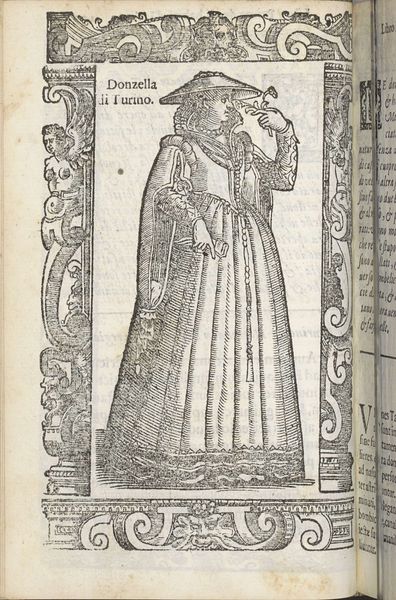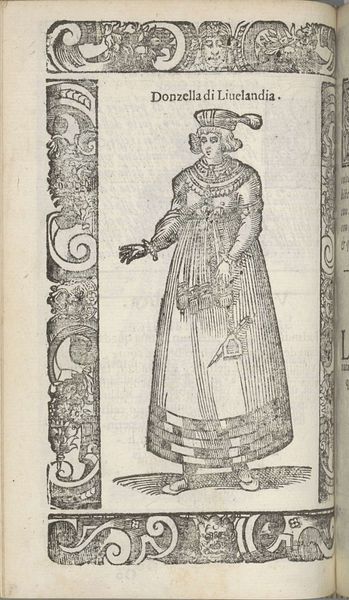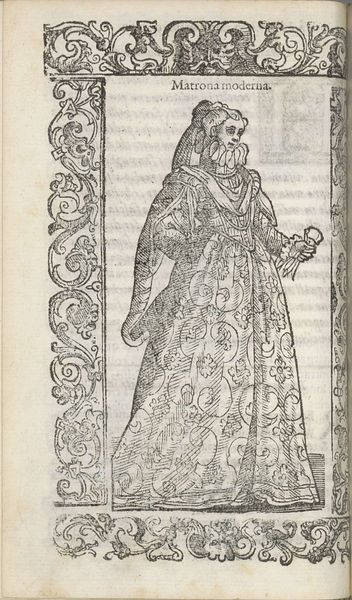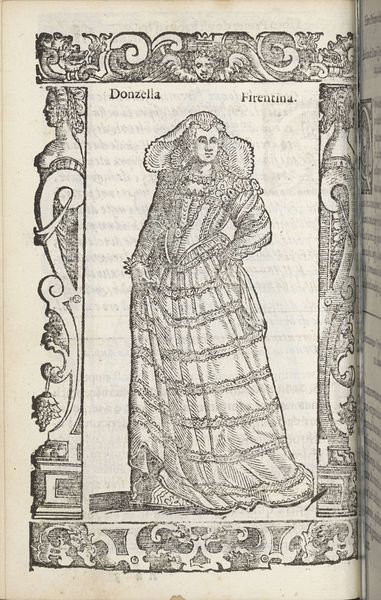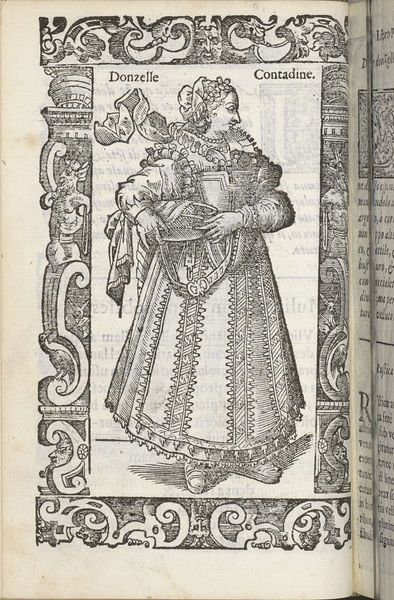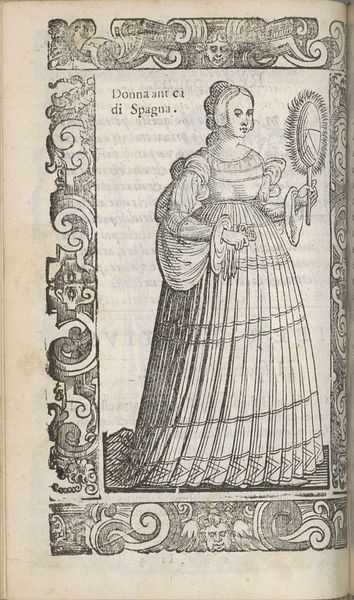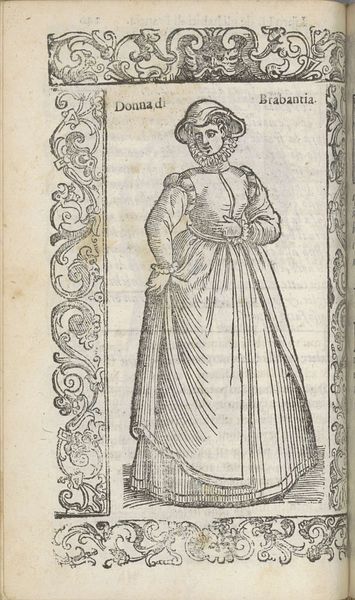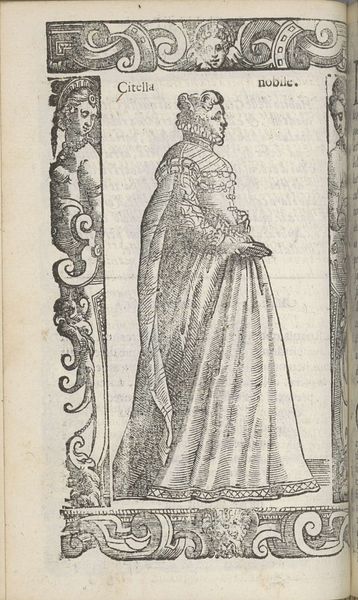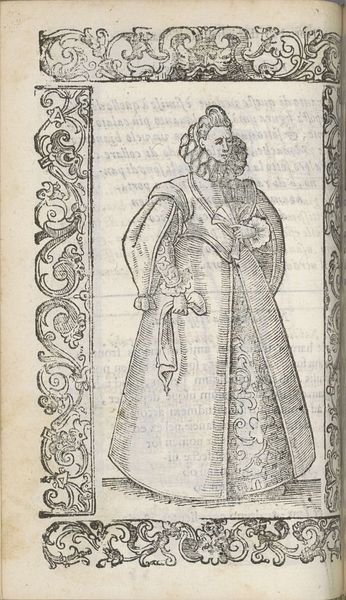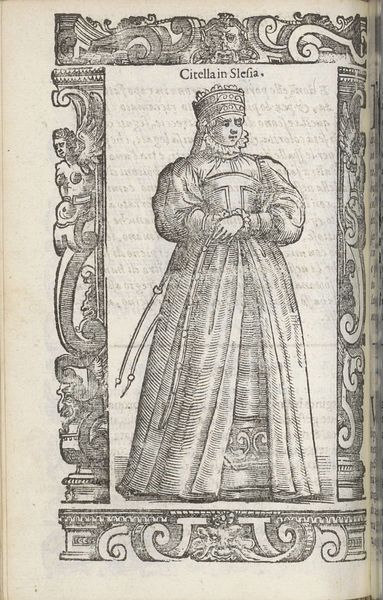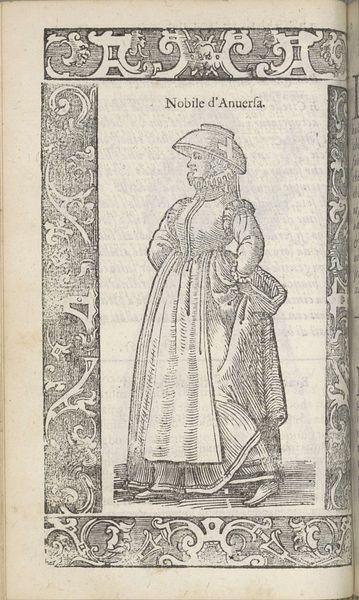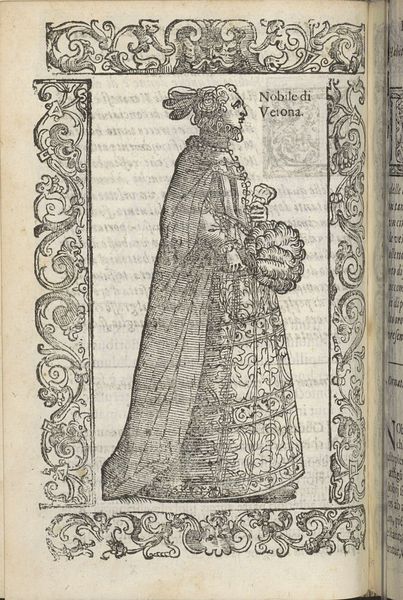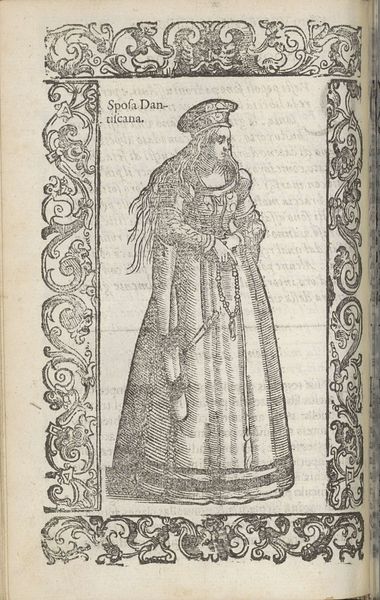
drawing, paper, engraving
#
portrait
#
drawing
#
mannerism
#
paper
#
coloured pencil
#
history-painting
#
engraving
Dimensions: height 167 mm, width 125 mm
Copyright: Rijks Museum: Open Domain
Editor: So this is Christoph Krieger's "Virdunense," dating back to 1598. It appears to be an engraving on paper. I’m immediately struck by how the detail of the woman’s clothing contrasts with the rather plain background. How do you approach understanding a work like this? Curator: Well, I'm drawn to understanding the means of production first. Krieger was working within a highly developed system of printmaking. The availability of paper, the engraver’s tools, the very existence of a market for images like these all dictate what we see. It's not just about aesthetics, but also about who had access to these goods and how they were circulated. Editor: That’s a really interesting point about access. I guess I hadn't considered how something seemingly simple could be connected to broader economic systems. Curator: Exactly! And consider the labor involved. Engraving was skilled work, demanding precision. We need to ask, who was creating these prints, for whom were they creating them, and how was that labor compensated? Think about the social hierarchies reflected in the commissioning and distribution of the work. Are we meant to assume she is of high class and stature because the means for commissioning artwork has been granted? Editor: I never thought about prints that way. Are we looking at a form of early mass production here, impacting both artistic creation and consumption? Curator: Precisely. Each impression is a copy, allowing for widespread distribution and accessibility – a kind of early democratisation of images, but still constrained by economic realities. Editor: This has really opened my eyes to considering art beyond just what's on the surface, looking instead at how it was made and who it was for. Thank you! Curator: Indeed. By focusing on the materials and production, we can better understand its social and cultural context.
Comments
No comments
Be the first to comment and join the conversation on the ultimate creative platform.
